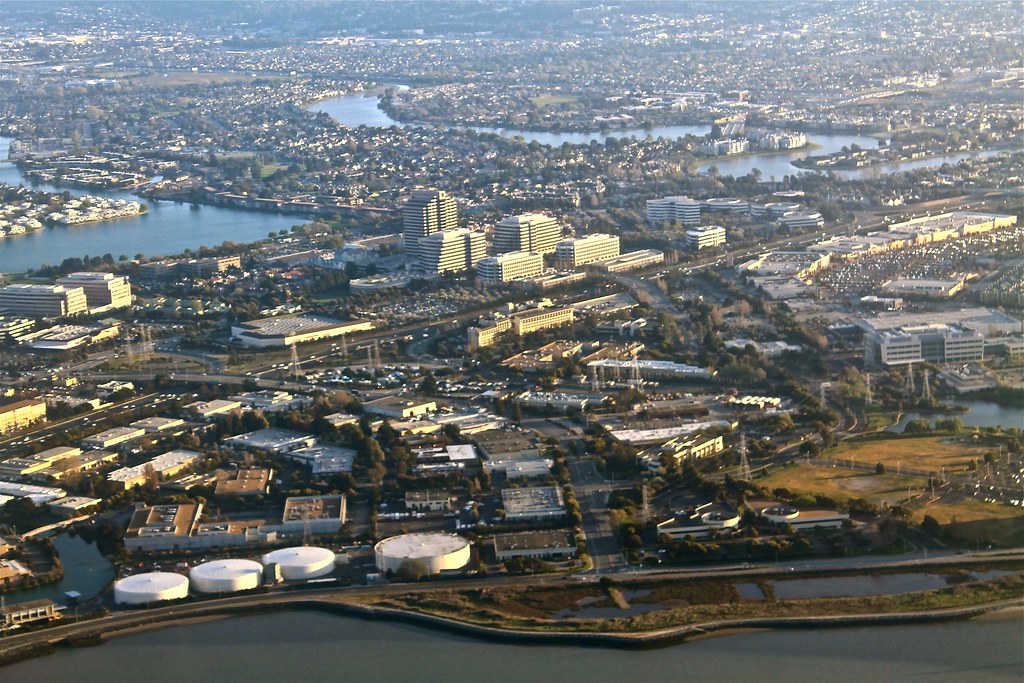In the rapidly evolving landscape of autonomous vehicles, Waymo stands out as a significant player, having transitioned from a Google initiative to a prominent leader in self-driving technology. Originally known as the Google Self-Driving Car Project, Waymo is on a mission to redefine transportation as we know it today, showcasing its innovative spirit from its headquarters in Mountain View, California, as a subsidiary of Alphabet Inc.

The company traces its illustrious beginnings back to the Stanford Racing Team, which made headlines by competing in the 2005 and 2007 DARPA Grand Challenges. The journey began when Google recognized the potential of autonomous driving technology, sparking significant investments and research initiatives. Under the expert guidance of Sebastian Thrun, a pioneer in artificial intelligence, and his co-founder Anthony Levandowski, Waymo’s technology began to take shape. The initial development phase kicked off in January 2009, where a small team embarked on a journey to create self-driving vehicles that could navigate the complexities of real-world traffic.

After years of relentless dedication, Waymo has conducted extensive road tests with a fleet of seven vehicles, demonstrating its ability to navigate diverse driving scenarios. The project gained public attention in October 2010 when the New York Times exposed Google’s secretive efforts, thrusting Waymo into the limelight and mainstream media. A pivotal moment in Waymo’s journey occurred in the fall of 2015, when it successfully completed ‘the world’s first fully driverless ride on public roads,’ not only proving the viability of self-driving technology but also reshaping the public’s perception of autonomous vehicles.

Fast forward to December 2016, the project was officially rebranded as Waymo, symbolizing a ‘new way forward in mobility. ‘ Fast forward to today, Waymo operates commercial robotaxi services in major cities like Phoenix, Arizona, Los Angeles, and San Francisco, with ambitious plans to expand its footprint further into Austin, Texas. The company has continually pushed the boundaries of technology, establishing partnerships with several vehicle manufacturers, including Stellantis, Mercedes-Benz, Jaguar Land Rover, and Volvo. The landscape of urban transportation is evolving, and Waymo is at the forefront of this revolution. With co-CEOs Tekedra Mawakana and Dmitri Dolgov steering the company, Waymo has raised a staggering $5. 5 billion through various funding rounds.

This financial backing allows Waymo to continuously innovate and improve its technology, ensuring that it remains a leader in the autonomous vehicle market. The engineering marvel of Waymo’s fleet includes the Chrysler Pacifica Hybrid, which has undergone rigorous testing in the San Francisco Bay Area. This vehicle is equipped with a suite of sensors and advanced algorithms that enable it to perceive its surroundings with remarkable precision. Waymo has invested heavily in developing its self-driving hardware, including cutting-edge lidar and radar systems that deliver 360-degree views and detect objects up to 300 meters away. The company’s technology is a testament to its commitment to safety, and Waymo regularly publishes safety reports to maintain transparency with the public. The journey hasn’t been without its challenges.

Regulating the autonomous vehicle industry has been a hot topic of discussion among lawmakers, leading to the implementation of laws that govern self-driving technology. Despite this, Waymo has successfully navigated the regulatory landscape, earning permits to operate its vehicles without safety drivers in select areas. With the recent developments in California, Waymo is poised to expand its services further, applying for permits that would allow fully autonomous taxis to operate in urban environments. The future of transportation is here, and Waymo is leading the charge.

With its cutting-edge technology, strategic partnerships, and unwavering commitment to safety, Waymo is poised to redefine our travel experiences. As the company continues to innovate and adapt, it’s clear that the future of mobility is full of possibilities, promising an exciting ride ahead as we embrace these changes.

As we delve further into the thrilling narrative of Waymo, the focus shifts to the future—specifically, the expansion plans and innovative robotaxi services that are set to revolutionize urban mobility across the United States. With its robust technological framework and pioneering spirit, Waymo is not just a participant in the autonomous vehicle sphere; it is emerging as a key architect of the future of transportation. The company has already made significant strides, operating its commercial robotaxi services in major cities like Phoenix, Arizona, and San Francisco, as well as Los Angeles. These services are not just a glimpse into the future; they are a reality today, showcasing Waymo’s commitment to offering safe, reliable, and efficient transportation options.

The introduction of Waymo’s robotaxi services heralds a new era in how we engage with urban transport. Imagine summoning a vehicle with a simple tap on your smartphone—no drivers, no waiting; just an autonomous vehicle arriving at your location, ready to whisk you off to your destination. This is the essence of Waymo’s vision. Their autonomous fleet is designed to operate seamlessly within the urban landscape, utilizing advanced sensors and state-of-the-art artificial intelligence to navigate complex traffic scenarios. The company has emphasized that its technology is built with safety at its core, and its vehicles are rigorously tested to ensure they can respond adeptly in real-world environments.

Waymo’s ambitions extend far beyond its current operations, with exciting plans to expand into new cities, including Austin, Texas. This growth is not merely about geographical reach; it represents Waymo’s mission to seamlessly integrate its technology into different urban landscapes, addressing local regulations and traffic intricacies. As they roll out new robotaxi services, Waymo aims to engage with local governments, stakeholders, and communities to create transportation solutions that reflect their unique needs and challenges.
A core aspect of Waymo’s strategy is to foster partnerships with various vehicle manufacturers—collaborating with heavyweights such as Chrysler, Mercedes-Benz, and Volvo. These partnerships are crucial for developing a diverse fleet of autonomous vehicles capable of serving different market segments. By pooling resources and expertise with established automotive companies, Waymo is not only enhancing its technological capabilities but also ensuring that its services are scalable and adaptable.
In addition to expanding its reach, Waymo is constantly enhancing its technology. For instance, the company has developed sophisticated systems that use lidar and radar technologies to perceive their surroundings with remarkable precision. These innovations enable Waymo vehicles to identify objects from up to 300 meters away, effectively navigating their environment with a comprehensive 360-degree awareness, significantly reducing driving risks and contributing to safer streets for everyone.

While the road ahead for Waymo seems promising, there are challenges that the company must navigate. Public acceptance of autonomous vehicles is a crucial factor that can influence the success of Waymo’s services. Despite the innovative technology, some communities remain skeptical about trusting driverless cars. Waymo is addressing this by prioritizing transparency in its operations and communicating openly about the safety measures in place. Regular safety reports and community engagement initiatives are strategies the company is employing to build trust with the public.

Furthermore, regulatory challenges present a significant hurdle in the expansion of Waymo’s services. Each city has its own regulatory framework governing autonomous vehicles, and Waymo must work closely with local governments to ensure compliance. This collaboration is not only vital for legally operating its robotaxi services but also for shaping the future policies surrounding autonomous transportation.
In addition to urban transportation, Waymo’s technology is poised to impact logistics and freight delivery services through its Waymo Via initiative. The company is testing Class 8 autonomous trucks, which could revolutionize the shipping industry by optimizing delivery routes and reducing the need for human drivers in long-haul trucking. This move could lead to safer and more efficient freight transportation, addressing the growing demand for logistics solutions in an increasingly digital economy.

As Waymo continues to innovate and expand, it is important to reflect on the broader implications of autonomous vehicle technology. The advent of driverless cars challenges traditional notions of vehicle ownership and public transportation. In urban environments, where congestion and pollution are rampant, the rise of robotaxi services could reduce the number of cars on the road, leading to less traffic and lower emissions. Additionally, the flexibility of on-demand transportation could enhance mobility for underserved communities, providing access where public transport is limited.

Collaboration with other companies, including ride-hailing platforms, opens new avenues for enhancing urban mobility solutions. Picture a future where your Waymo robotaxi is effortlessly integrated with your favorite ride-sharing app, allowing for seamless travel throughout the city. This potential collaboration signals a thrilling future for transport and mobility, setting the stage for innovations that enhance everyday experiences.
The future appears bright for Waymo and its robotaxi services, overflowing with exciting possibilities. As technology advances, the concept of autonomous transportation evolves from a far-off dream to an imminent reality. With its strategic partnerships, groundbreaking technology, and visionary outlook, Waymo is primed to lead us into a new era of mobility. As we embark on this exhilarating journey towards the future, let’s embrace the transformative potential of autonomous vehicles, ready to reshape urban landscapes, enhance our quality of life, and provide safer, more efficient travel options. The adventure has only just begun, and it’s bound to be an exciting ride!
Related posts:
Wikipedia
We took self-driving Waymo cars for a test ride. This is what happened





